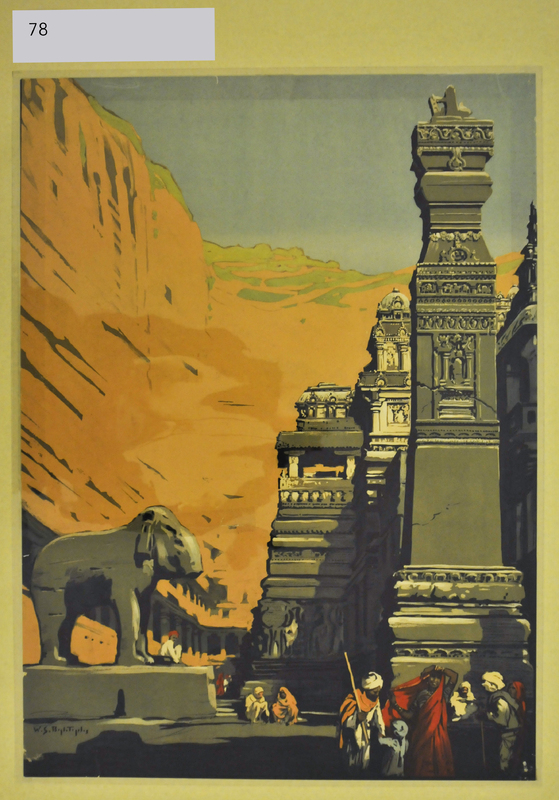Indian Cave Temple
Item
-
Title
-
Indian Cave Temple
-
Description
-
Blue skies with shadows showing that it is a sunny day. There are orange stone walls surrounding grey stone structures that have carvings. There are several arches lining the stone walls. In front of the arches on the left side is an elephant sculpture with a broken nose. In front of the stone structures, with carvings, on the right side are eleven local people. There are two people in the far back that are unrecognizable. There is a man sitting by the elephant sculpture; to the right of the man are two people sitting on stairs in front of a structure. These two people are wearing what would be considered the proper clothing of the area which are long dresses or pants with cloth wrapped around their head. There is a group of people standing in front of the closest structure. There are six people. A dark skinned man with a white turban and white clothing along with orange fabric wrapped around his neck. He is also holding a stick in his right hand. This man is looking down at a child in blue clothing who is grabbing at the mans arm. There is a dark skinned woman in red clothing next to the man and child. There are three other people next to the woman and one of them is a man holding a stick in his left hand. The place in the poster is part of the Ellora caves and this is the Kailash Monolithic Temple. The structure was excavated out of the vertical face of a hill. They are Buddhist, Hindu and Jain cave temples and monasteries and were built between the 5th century and 10th century. This is a place where locals, like the ones in the poster, go to view the magnificent structures that are part of their culture.The Kailash Monolish Temple found in the Ellora Caves of the Sahyadri Hills region is considered one of the most curious and magnificent creations of rock - cut structures in the world. The caves in Maharashtra are 2 kilometers (1.24 miles) in length and include 34 different caves. Since the excavation of structures this site has become a major local and tourist attraction. Visitors can walk through the caves and the temples and monasteries that are constructed inside them. Within the caves there are thousands of rock sculptures and glyphs all of which must have been hand carved. Many of the sculptures are riddled with history and religious significance, luckily Dr. Deepanjana Klein and Dr. Arno Klein have done extensive work to document and transcribe information about the different aspects of the caves. These caves are a national monument for India, they drew people there with their magnificence and wonder a century ago and still do today.
-
Contributor
-
L.Hubbs | lxh3966@g.rit.edu
-
Type
-
Poster
-
Identifier
-
Poster 78
http://albert.rit.edu/record=b1043676~S3


